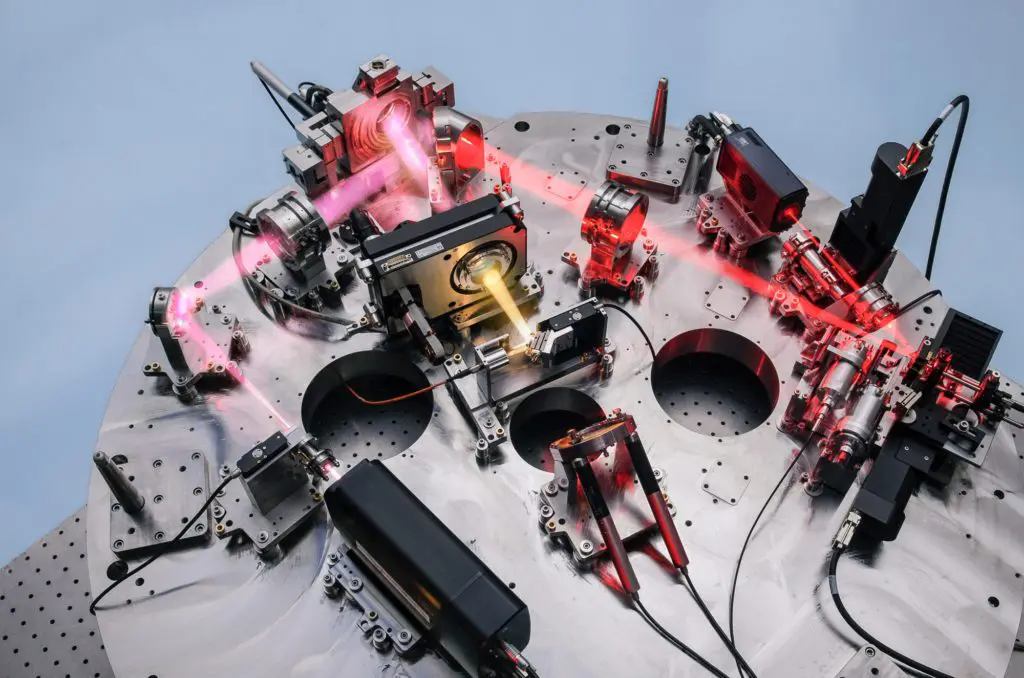NIRPS


Technical Specifications |
|
|---|---|
| Instrument Name | Near-Infrared Planet Searcher |
| Acronym | NIRPS |
| First Light | June 2022 |
| Wavelength Range | 0.95 - 1.8 microns (infrared) |
| Instrument Type | High-resolution spectrograph |
| Status | Operational at the 3.6 metre ESO telescope at La Silla |
The NIRPS (Near-Infrared Planet Searcher) spectrograph is a cutting-edge instrument newly installed at the 3.6 metre telescope in La Silla, Chile, operated by the European Southern Observatory (ESO). Inspired by the SPIRou instrument, NIRPS shares the ability to detect and characterise exoplanets around low-mass stars using the radial velocity method, achieving incredible precision.
A significant advantage of NIRPS is that it is located at the same facility as the HARPS (High Accuracy Radial velocity Planet Searcher) instrument, renowned for achieving radial velocity measurements with unmatched precision. NIRPS and HARPS can operate simultaneously in both visible and infrared light, providing astronomers with unique capabilities to study and characterise exoplanets comprehensively.
NIRPS serves a crucial scientific mission: conducting a systematic survey of nearby low-mass stars, with the potential to detect Earth-like exoplanets within their habitable zones. These discoveries could become prime candidates for direct imaging by future giant telescopes like the Thirty Meter Telescope (TMT) and the European-Extremely Large Telescope (E-ELT), signaling a new era in exoplanet research.
Additionally, NIRPS data can confirm and characterise exoplanets found via the transit method, enabling mass measurements and compositional constraints, thus expanding our understanding of distant worlds.
The development of NIRPS is an international collaboration involving institutions such as the OMM, iREx, the Université Laval, Geneva Observatory, University of Grenoble, Instituto de Astrofísica de Canarias, NRC Herzberg Institute of Astrophysics, University of Porto, and Universidade Federal do Rio Grande do Norte.
ESO has granted 740 observation nights over 5 years to the NIRPS team, in which OMM researchers play a significant role, including Director René Doyon, Project Scientist Étienne Artigau, researcher Jonathan St-Antoine, and Project Manager Lison Malo, supported by Frédérique Baron. OMM researchers Neil Cook and Étienne Artigau are also involved in developing NIRPS’ data reduction pipelines. Several members of the OMM technical team, including Philippe Vallée, Jonathan St-Antoine, and Denis Brousseau, took part in building the instrument. NIRPS promises groundbreaking contributions to our understanding of exoplanets and their potential habitability.